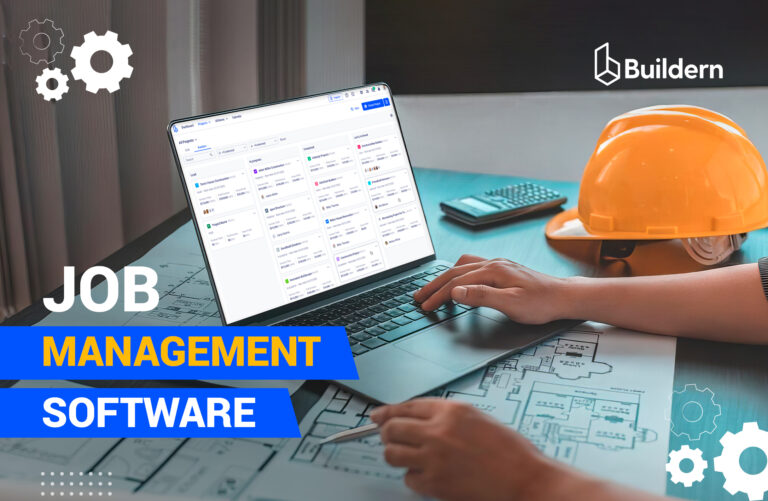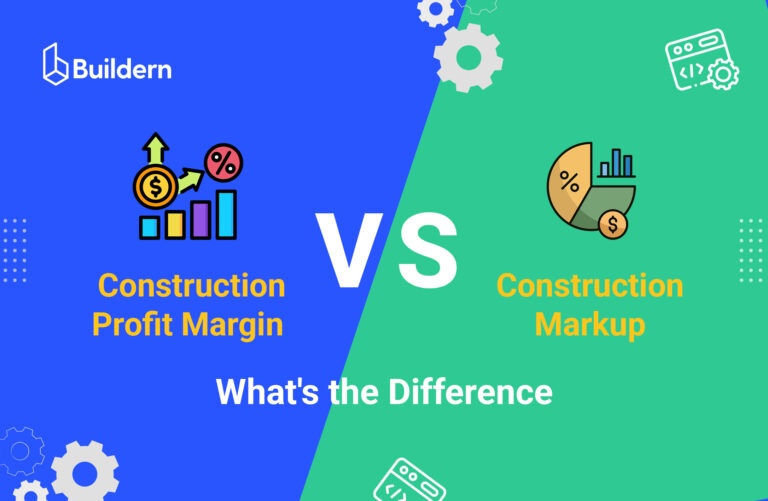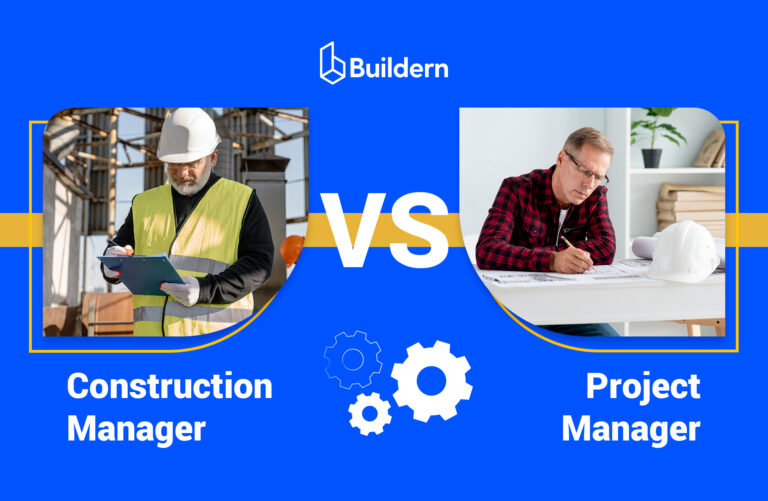Construction Client Portal: Improving Transparency and Responsiveness
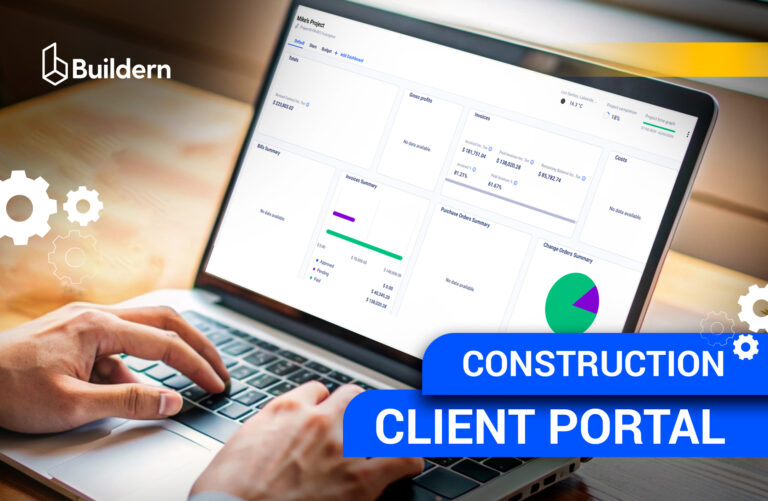
How can you keep homeowners clearly updated when a construction project is in full swing?
Clear construction communication and the ability to share updates are a competitive advantage that not all can master. As I know from my experience, it’s even harder when things don’t go exactly as planned. Building a strong relationship with clients takes more than just delivering quality work on-site.
After all, trust grows when homeowners feel fully informed without guessing what’s happening behind the scenes. Construction client portals are a tool to ensure a homeowner stays in the loop.
In my blog, I will recommend what details you need to share with a client and how to make the approval process smooth by having a dedicated portal.
Table of Contents
- What Is a Construction Client Portal?
- Core Components and Capabilities
- Easy Access to Updates
- Client Portal for Small Construction Business
- Key Takeaways

What Is a Construction Client Portal?
It is a secure online platform for general contractors and homeowners. It provides access to all project-related information in one place.
From my experience, construction is a never-ending process of approvals and confirmations. This is related to all stakeholders, including the project managers and subcontractors. However, instead of trying to streamline communication across teams, you can bring them both to one platform and share updates and documents there.
For example, in the past, I needed time to answer all phone calls that came during the construction process. Clients, subcontractors, and designers all have to be in touch with a project manager or a general contractor. Thus, changing the tiles in the kitchen could take hours of exchanging calls, emails, follow-ups, and texts.
Somewhere along the way, details could be missed, causing delays or costly rework. By the way, rework does not mean a small repair.
According to the Construction Industry Institute, in a typical project, rework costs between 2% and 20% of a project’s total amount. Imagine how a hub that keeps everything organized and transparent can save you from extra costs.
Why General Contractors Need It?
Even if you think you are the master of project management and client communication, homeowners will always have questions.
As a project manager, I constantly faced repeated questions like “When will the plumbing be finished?” “Did you receive my selection for the kitchen counters?” “Why does the invoice seem different from what we discussed?” Are you familiar with these concerns? I am sure you are.
First, realize that it’s normal and the client has to ask as many questions as needed. However, a centralized portal somehow helps the builder’s office crew to respond.
The main goal of a portal for a general contractor is to:
- Save time: Reducing back-and-forth calls and messages means focusing more on building
- Prevent costly mistakes: All approvals are documented, reducing disputes and rework.
- Stay organized: Coordinated quick responses with visual proofs and the ability to respond and comment.
- Strengthen client relationship: Transparent communication becomes a marketing advantage that strengthens trust and increases referrals.
Why Clients Need It?
No matter how good a proposal is, a homeowner naturally needs to follow the project workflow to see that the house is ready and how the money is spent.
Building a house is a major milestone in anyone’s life, but it’s important to remember that homeowners still have their daily responsibilities. If I were in their place, I couldn’t afford to spend work hours tied to the phone, waiting for updates.
A client portal solves this by allowing homeowners to log in anytime and instantly check the real status of their project.
This platform helps to maintain:
- Financial peace of mind: Invoices, budgets, and payments are tracked in real time
- Transparency: Every update, document, and schedule is available in one place.
- Convenience: Approvals for selections or change orders do not take hours.
- Reduced stress: No more worrying whether details were forgotten or miscommunicated.
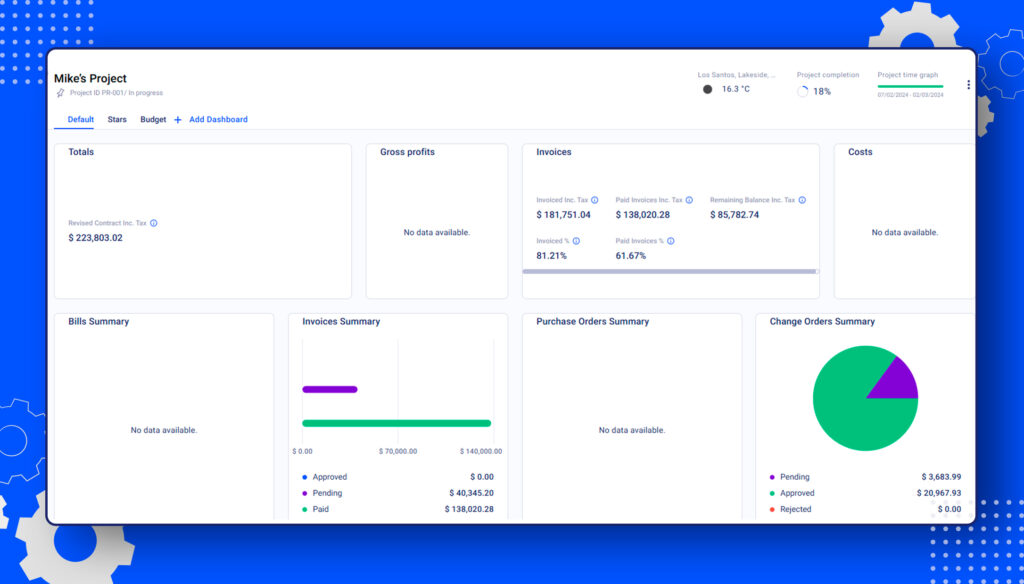
Core Components and Capabilities
Before highlighting all key features of the client portal, let’s see which information one usually has to share with clients.
Transparency is important, but there are some behind-the-scenes processes that can be out of the client portal.
For managing this in the construction management software, I go to the roles and permissions sections. These tabs allow a general contractor to control what they show to their clients.
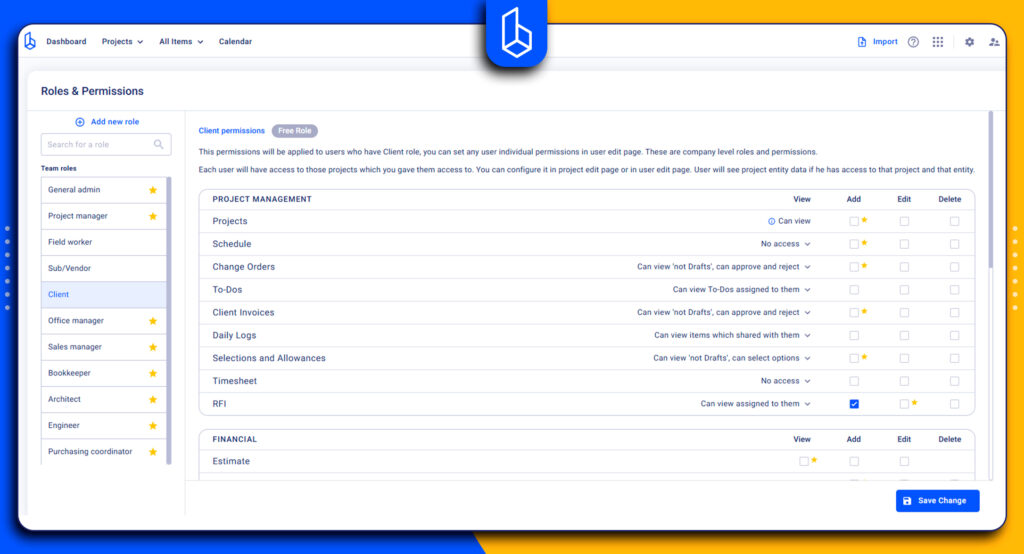
For example, an estimate is usually of no use in the unified portal as it’s a rough copy of a proposal. This is formed by the general contractor for his personal use to sum up the bid requests and make necessary calculations to present a polished proposal to the client. Meanwhile, the change orders, invoices, and selections or allowances are clearly a part of the client portal.
Now, let me show what I usually mean by key features included in the client portal.
Financial Transparency
From what I’ve seen, one of the biggest concerns homeowners face during construction is uncertainty around costs. A client portal addresses this by offering financial transparency tools.
With all financial information stored in one place, clients no longer have to shift to alternative platforms.
Client invoices are easily accessible, allowing homeowners to track what has been billed. When a client sees what has been paid and what remains outstanding, there is no misunderstanding.
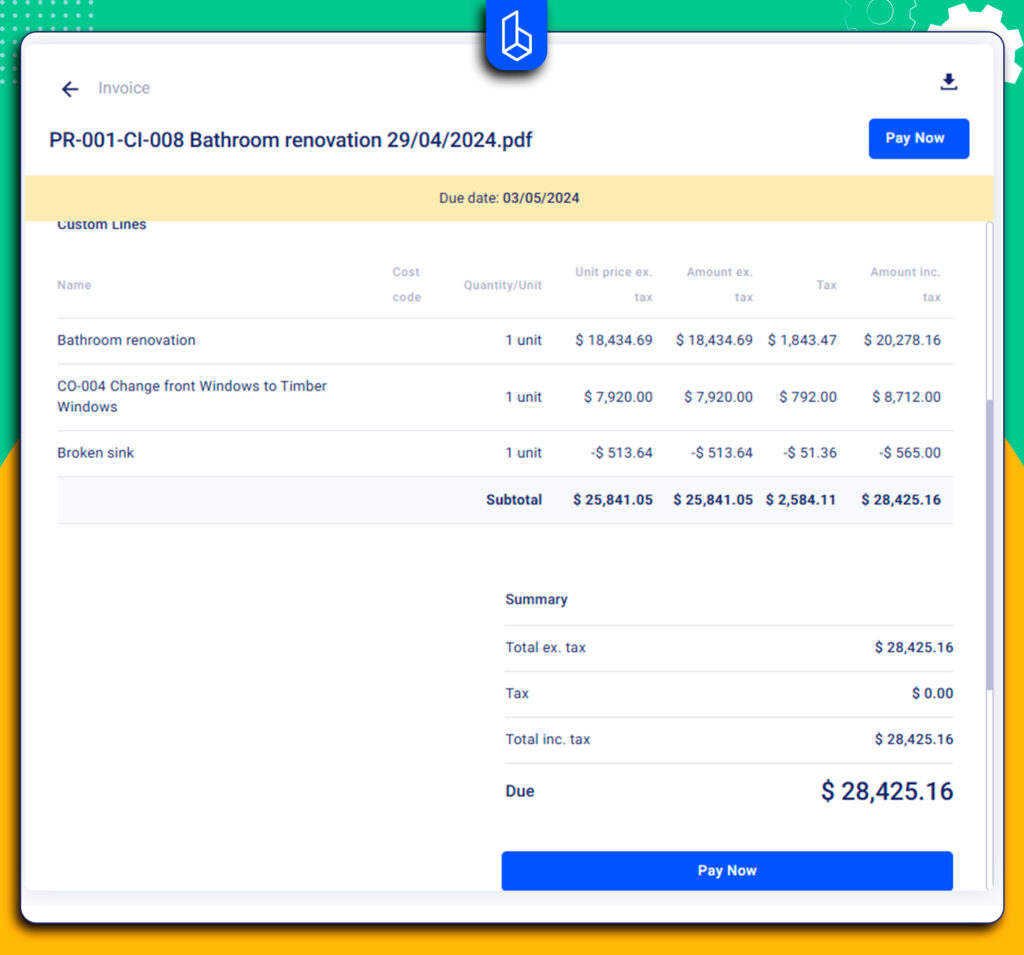
Change orders are another critical component. Instead of relying on verbal agreements about changes to some elements, the portal provides a documented process. Contractors submit changes with updated costs, and clients can approve them directly within the system.
Allowances help clients not to overspend the budget. An amount is included in the contract for materials or some services, the scope and quantities of which are not determined yet. The portal shows what funds are allocated, for example, for finishes. If a homeowner decides to upgrade, the portal automatically reflects the cost difference.
How do I check the efficiency? If financial management has become simple and I no longer spend hours on finalizing every allowance, the tool has already proven its value
Centralized Communication
One of the biggest advantages of having such a hub is to keep all communication in one place. I’ve seen how messy communication can get during a construction project.
One homeowner texts about a paint color, another sends an email with a photo of the tile they like, and later they call to make sure I got the message. By the time a project manager tries to track everything down, half the details are across messengers and texts.
With an in-built messaging system, a homeowner can open it at the desk or on the go, logging in on a desktop from a smartphone. Looking through the updates from a contractor takes a few clicks.
Besides, you can see the visuals right away by opening the attached files from the client. There is no way you will miss a comment as the system sends a notification automatically.
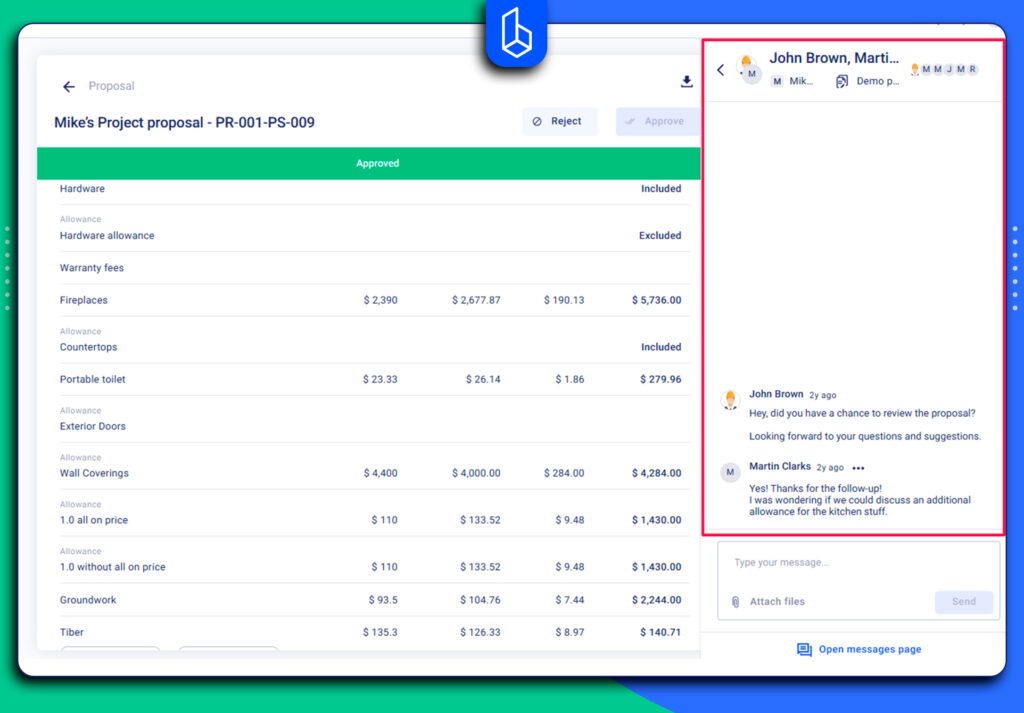
Document and Selection Management
Another common challenge I’ve faced on projects is keeping track of documents and selections.
A homeowner sends me their signed agreement as an attachment in one email, their insurance paperwork in another, while a list of preferred fixtures is sent over text. Weeks later, when it’s time to double-check the details, it’s easy not to find the necessary files through endless threads. It’s frustrating and risky.
The client portal changes the situation completely. Homeowners know exactly where to look, and I know everything is up to date.
Selections work the same way. Instead of sending messages about which flooring or lighting options they want, several items are uploaded, and the client simply reviews and approves.
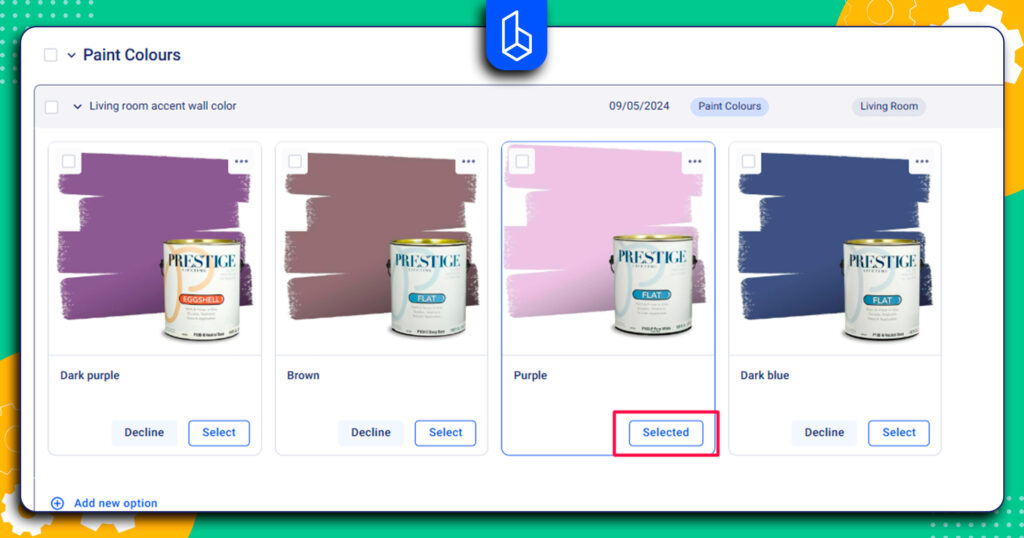
Tracking Schedules
Keeping everyone on the same page about timelines is also a serious problem. In the past, it was all about calls. Clients couldn’t figure out when the painting was to begin or whether flooring would be installed before the cabinets.
It’s hard to explain the timelines with spreadsheets or via email. When showing a timeline, a graph, or a diagram is the best working method.
With a construction client portal, schedules become clear. Instead of chasing updates, homeowners can see a Gantt chart where all steps of the project are interrelated.
Besides, they don’t need to understand complex construction terms. The visual timeline shows what’s happening now, what’s coming next, and whether the project is running on track.
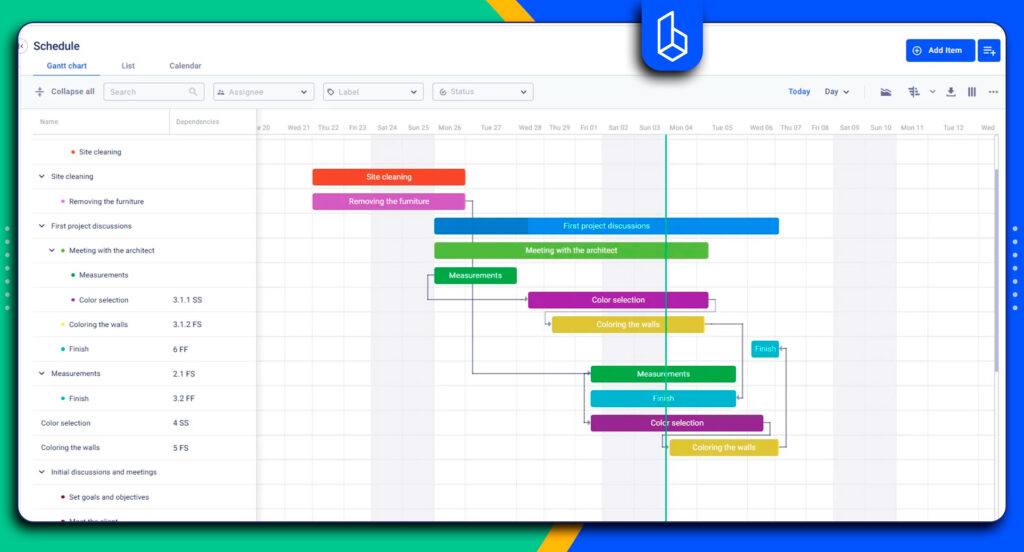
Easy Access to Updates with Mobile Apps
There was a time when having construction software on a desktop felt like enough. Back then, I’d send clients a detailed email in the evening, and they’d open it at home when they had time.
However, this rhythm doesn’t work anymore. Everyone expects to see updates on their mobile phone in real time.
I am sure now homeowners don’t want to wait until they’re back at their desk to check on the project. They might sneak a look during lunch at the office. The client portal in construction can also be on your mobile. The customer can instantly see invoices, schedules, or progress photos, which is simply a better fit for the way we live now.
It’s the same for contractors and workers in the field. You can coordinate a change order while a homeowner is standing on-site with the crew. Instead of calling the office to upload documents, show the options, and the client will be able to approve right away. No wasted time and no confusion.
To have full access to all functions, choose a software where the mobile version doesn’t feel like a “light” app, but has the same functionality as the desktop. There can be RFIs, financial management elements, scheduling, and timesheets. In other words, everything is included to track the details related to the ongoing project.

Client Portal for Small Construction Business
Running a small construction business does not mean it cannot use software tools to simplify the entire process.
Of course, in a small company, the same person is checking on crews at the site, the next answering client calls, and later sitting down to finish invoices. It’s a lot to keep up with, and honestly, it’s easy to miss details; and a client portal in this sense makes a huge difference.
For my small team, the portal feels like an extra set of hands. Budget tracking, for example, is available for a general contractor and a homeowner, which means no surprises later.
The same is true for storing documents in one hub. When a client asks, “Can you resend that?”, I can just point them to the portal.
Such a centralized platform can become your competitive advantage in the market. When agreeing on another project, inform the client that there will be a portal for better transparency. I am sure this will have a positive impact.
How to Create a Client Portal in Construction Software?
Make sure that the construction management software you are working with supports a dedicated portal for clients. Not every platform offers this feature, so choosing software with it is essential. Setting it up usually does not require much time. You’ll only need to configure permissions, decide what information clients should access, and send them an invite.
Can a General Contractor Control What Clients See in the Portal?
Yes, the user who has a general admin role can fully control what information goes to the client portal. Moreover, there are usually different access settings. For example, a client can have access to view schedules during the entire project or during a limited period of time.
How Can Clients Access Their Portal?
Clients can access their portal from both desktop and mobile. Of course, on a desktop, they can log in from the office or home and review detailed project documents, invoices, or schedules on a larger screen. For busy homeowners or contractors in the field, the mobile version is just as powerful. Having the same functionality across devices ensures clients always stay connected.
What if Clients Aren’t Tech-Savvy?
Be ready that not every homeowner is comfortable with new technology, and that’s okay. A good client portal should be designed to have easy access to menus and navigation.
In my experience, even clients who prefer phone calls quickly adapt. This happens once they see how convenient it is to log in and find everything in one place. They don’t have to dig through emails or remember passwords for multiple apps. Within a few days, most clients wonder how they managed without it.
Key Takeaways
With a client portal, homeowners are no longer observers who need to clarify every detail by phone or text message. They become active participants in the construction process, able to see progress, approve selections, and track budgets in real time.
Transparency reduces stress and builds trust. Clients feel confident that nothing is being overlooked, and even when unexpected changes occur, they are informed immediately. For general contractors, this means fewer repetitive calls and a smoother workflow.

